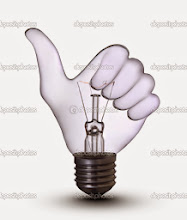Introduction;
Power electronic converters can be found wherever there is a need to modify a form of electrical energy (i.e. change its voltage, current or frequency). The power range of these converters is from some milliwatts (as in a mobile phone) to hundreds of megawatts (e.g. in a HVDC transmission system). With "classical" electronics, electrical currents and voltage are used to carry information, whereas with power electronics, they carry power. Thus, the main metric of power electronics becomes the efficiency.
The first very high power electronic devices were mercury arc valves. In modern systems the conversion is performed with semiconductor switching devices such as diodes, thyristors and transistors. In contrast to electronic systems concerned with transmission and processing of signals and data, in power electronics substantial amounts of electrical energy are processed. An AC/DC converter (rectifier) is the most typical power electronics device found in many consumer electronic devices, e.g. television sets, personal computers, battery chargers, etc. The power range is typically from tens of watts to several hundred watts. In industry the most common application is the variable speed drive (VSD) that is used to control an induction motor. The power range of VSDs start from a few hundred watts and end at tens of megawatts.
The power conversion systems can be classified according to the type of the input and output power
Power electronic converters can be found wherever there is a need to modify a form of electrical energy (i.e. change its voltage, current or frequency). The power range of these converters is from some milliwatts (as in a mobile phone) to hundreds of megawatts (e.g. in a HVDC transmission system). With "classical" electronics, electrical currents and voltage are used to carry information, whereas with power electronics, they carry power. Thus, the main metric of power electronics becomes the efficiency.
The first very high power electronic devices were mercury arc valves. In modern systems the conversion is performed with semiconductor switching devices such as diodes, thyristors and transistors. In contrast to electronic systems concerned with transmission and processing of signals and data, in power electronics substantial amounts of electrical energy are processed. An AC/DC converter (rectifier) is the most typical power electronics device found in many consumer electronic devices, e.g. television sets, personal computers, battery chargers, etc. The power range is typically from tens of watts to several hundred watts. In industry the most common application is the variable speed drive (VSD) that is used to control an induction motor. The power range of VSDs start from a few hundred watts and end at tens of megawatts.
The power conversion systems can be classified according to the type of the input and output power
- AC to DC (rectifier)
- DC to AC (inverter)
- DC to DC (DC to DC converter)
- AC to AC (AC to AC converter)
Principle;
As efficiency is at a premium in a power electronic converter, the losses that a power electronic device generates should be as low as possible. The instantaneous dissipated power of a device is equal to the product of the voltage across the device and the current through it (). From this, one can see that the losses of a power device are at a minimum when the voltage across it is zero (the device is in the On-State) or when no current flows through it (Off-State). Therefore, a power electronic converter is built around one (or more) device operating in switching mode (either On or Off). With such a structure, the energy is transferred from the input of the converter to its output by bursts. To convert the power electronics by using rectifierApplications;
Power electronic systems are found in virtually every electronic device. For example:- DC/DC converters are used in most mobile devices (mobile phones, PDA etc.) to maintain the voltage at a fixed value whatever the voltage level of the battery is. These converters are also used for electronic isolation and power factor correction.
- AC/DC converters (rectifiers) are used every time an electronic device is connected to the mains (computer, television etc.). These may simply change AC to DC or can also change the voltage level as part of their operation.
- AC/AC converters are used to change either the voltage level or the frequency (international power adapters, light dimmer). In power distribution networks AC/AC converters may be used to exchange power between utility frequency 50 Hz and 60 Hz power grids.
- DC/AC converters (inverters) are used primarily in UPS or emergency lighting systems. When mains power is available, it will charge the DC battery. If the mains fails, an inverter will be used to produce AC electricity at mains voltage from the DC battery.
References;
- Issa Batarseh, "Power Electronic Circuits" by John Wiley, 2003.
- V. Gureich "Electronic Devices on Discrete Components for Industrial and Power Engineering", CRC Press, New York, 2008, 418 p.
- Editor: Semikron, Authors: Dr. Ulrich Nicolai, Dr. Tobias Reimann, Prof. Jürgen Petzoldt, Josef Lutz: Application Manual IGBT- and MOSFET-power modules, 1. edition, ISLE Verlag, 1998, ISBN 3-932633-24-5 online version





Post a Comment